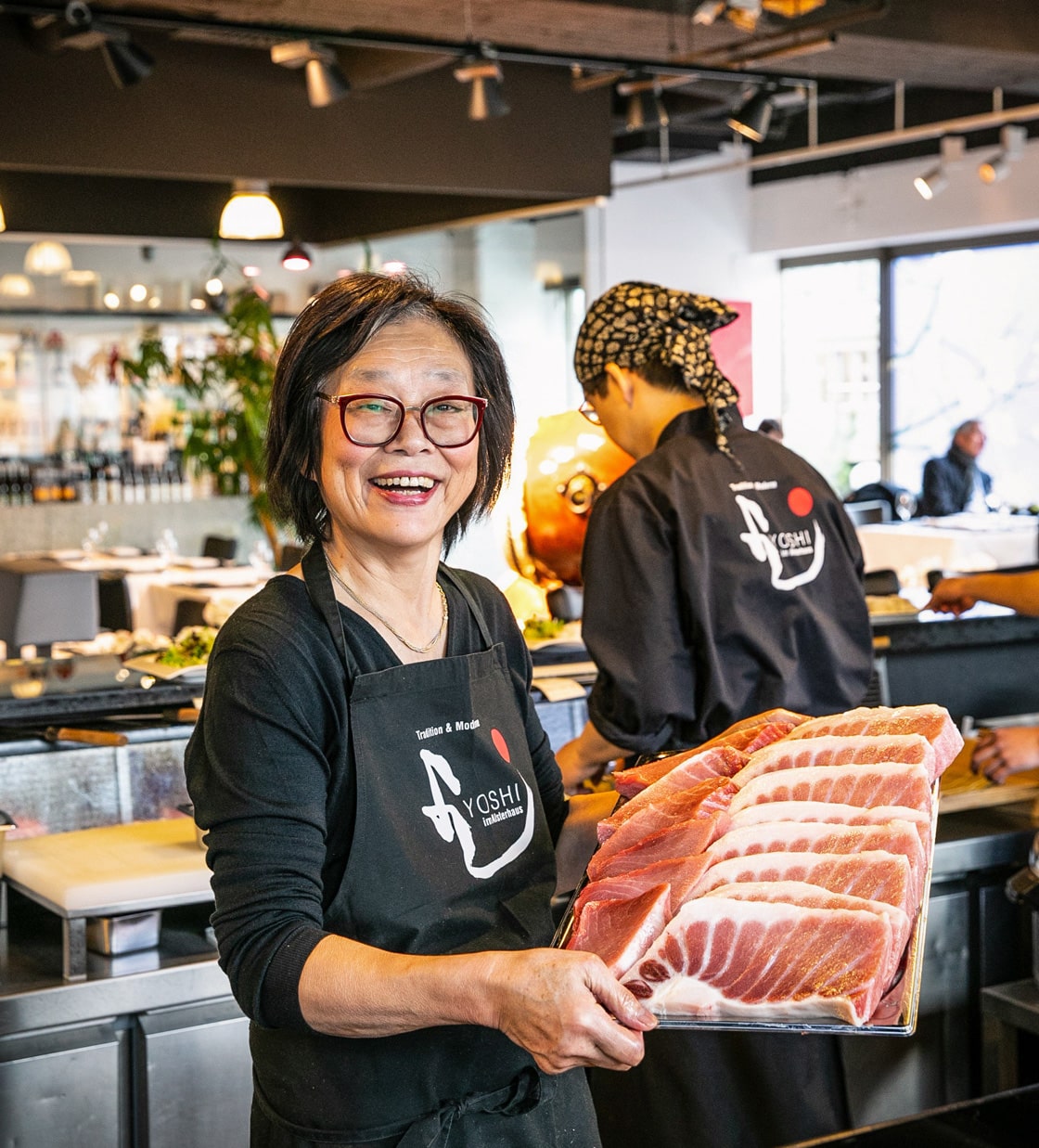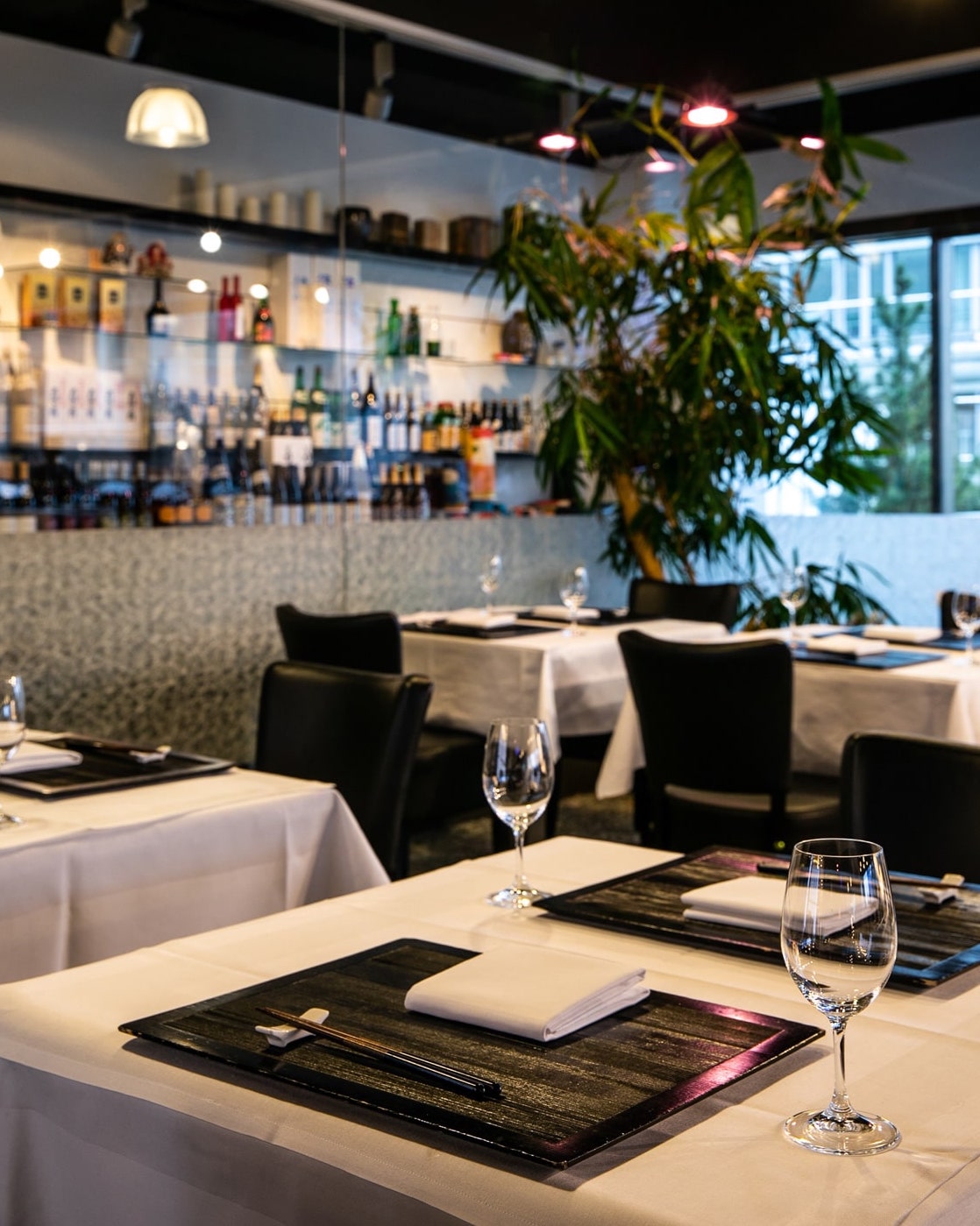When Yoko Higashi arrived in Germany in the 1970s, she believed she would never see her native Japan again. The wild seventies had just begun, the Hippie movement was at its apex and everyone wanted to be a part of it. “Most went to New York or San Francisco,” she says. Yoko, however, came across a newspaper article about the German dancer and choreographer Mary Wigman who made expressionistic dance and dance theatre a socially acceptable art form and is still considered a pioneer of modern dance.
For the young Yoko Higashi, an athlete herself, this was reason enough to move to Germany. She’s magically attracted to the new freedom of movement and body and the possibility to express one’s inner world. “Everything has to flow,” she emphasizes, “including the body and the thoughts. When you halt, simplicity is lost, and this simplicity is the world’s most perfect thing. It simply has to be simple.”
She’s immediately accepted to the renowned Folkwang Universität der Künste in Essen. She dances with Pina Bausch and soon also becomes a choreographer, until she later organizes her own tours, traveling the world with her ensemble.

Every time she brings her dancing into the world, she also brings a piece of the world back to Germany with her. In 1972, she is chosen by her native Japan to represent the country during the Olympic Games in Munich in the art of Ikebana or flower arrangement. Her mother, a highly progressive woman, was an Ikebana master and teacher for tea ceremonies, which involves the stirring and straining of tea for up to 45 minutes before it’s served.
While others received one lesson per week, Yoko Higashi was there every time, watching and learning. “In Ikebana, every flower has a side for the sun and one for the shade,” she says. “It’s not about organizing them by size or colour, but by the stories they want to tell. Before I arrange them, I speak with the flowers, and they tell me where they once stood, how they grew, and according to these criteria, I place them in order to create the perfect harmony. That’s what life is all about. Harmony. With flowers. With tea. And yes, also with cooking. Everything has to match perfectly and generate harmony.
Everything carries light and darkness, life and death. To remain in an endless flow between them, that is perfection.” She repeats these sentences often like a mantra, and they are effective. The more we speak, the more I understand why her kitchen is so excellent, as recounted numerously in articles and reviews. YOSHI is not a restaurant, it’s an expression of the flow of life. It’s Ms. Higashi’s soul, translated into a landscape of fish, rice, vegetables and typical Japanese dishes.
“The simpler the dish, the better it is,” says Yoko, “the ingredients have to, of course, be correct, the excellent quality of the products is not a choice, it’s a question of morals.”
She learned this during her childhood thanks to her mother’s compassion. When an officer, who had cooked for other officers and generals during the war, returned to his native village and began working in a factory, Yoko’s mother couldn’t let his talents go to waste. She invited him to cook regularly for the family and was overwhelmed by his culinary abilities, which spanned not only the Japanese, but also the European kitchen due to his long time spent abroad.
Yoko’s mother organized cooking classes for all those interested and soon opened a culinary school, with the officer as the head. He taught Yoko Higashi to respect every ingredient and took her under his wing and let her observe his process. To this day she fondly remembers his extraordinary stature and his upright posture, including to life.

In Germany, Yoko begins cooking for her friends, mostly for private gatherings, but sometimes also for gallery openings or small events. Her talents don’t stay hidden for too long and so her friends ask her regularly to please open her own restaurant. Yoko agrees knowing that authentic Japanese cuisine is rare and that the vision of a chef clad in a white uniform is an attractive proposition.
She opens the Shiawase (World Harmony) in Hamburg, a title befitting of her destined goal. Everything Yoko does is to achieve this complete harmony. Harmony between her restaurant and her work, between every product and composition in a recipe, between guest expectation and her standards. Every day she works anew to bring harmony to the world outside, and to the world inside herself.
Unlike dance, where the spectator reaction is almost unspecific, Yoko enjoys the direct feedback from her restaurant guests. She wants to know what the customer loves and where she can improve. Every time she prepares something, she strives to make it consistent, if not better. This is how she gradually achieves her much aspired perfection.
“No matter what you do, one should always do it in the here and now. Every thought regarding the past or future disrupts the flow. It complicates the simplicity. Only when I completely engage with the present moment can I give my best. And so, the best becomes a bit better every day,” says the wise 73-year old.

In her current restaurant YOSHI, located high up in Hamburg’s Alsterhaus, she pays heed to all these words of wisdom, and more. She has created a temple of calm and harmony. Her dishes look like blooming landscapes. Every ingredient stands independently and because of their high quality, not much else is needed to bestow the palate with an experience.
Yoko employs her staff according to similar principles. She avoids skilled labour because in her experience there is a lack of motivation to develop further. Her only requirement is that the applicant should have training in a Japanese art form. Whether it’s calligraphy, Jiu-Jitsu or Ikebana. Of course, we want to know why. “Whoever has mastered one of these arts knows what it means to be in this flow and to start anew every day as if it was their first. One should be ready to learn something new every day and to strive for the ultimate perfection with one’s whole heart.”

During our conversation Yoko thanks her mother over and over again. For her foresight, kindness, warmth and wisdom; attributes that Yoko herself possesses. And even if she does live entirely in the present Yoko Higashi also has her share of future visions. She has decided that if the world continues to function in its current state and a guest can’t simply visit a restaurant, then the restaurant will just have to come to the guest. “A kind of guest performance for the restaurant, so to speak,” she laughs.
Inside YOSHI one admires a beautiful view of the Hanseatic city of Hamburg, dives into the soul and culture of Japan and Ms. Higashi and enjoys Kaiseki (the finest form of Japanese cuisine and the basis for our modern understanding of fine dining) in a harmonious ambience. There’s no doubt that whoever appreciates cultural highlights, authentic cuisine and Far Eastern philosophy, should trust Ms. Higashi’s delicate sense for harmony and perfection and indulge in an evening at YOSHI.
Read More:
- Takumi Restaurant: the best ramen for authentic taste
- Hamburg: A Harbor For Great Food and Hospitality
Words: Esther Seibt
Photos: YOSHI im Alsterhaus
Last Updated on March 16, 2024 by Editorial Team
Esther, a Berlin-based creative writer specializing in lifestyle, travel, and health, possesses a keen eye for detail. She skilfully crafts engaging and crafted content that integrates wellness, hotel guides, and our curated lifestyle guides seamlessly.











